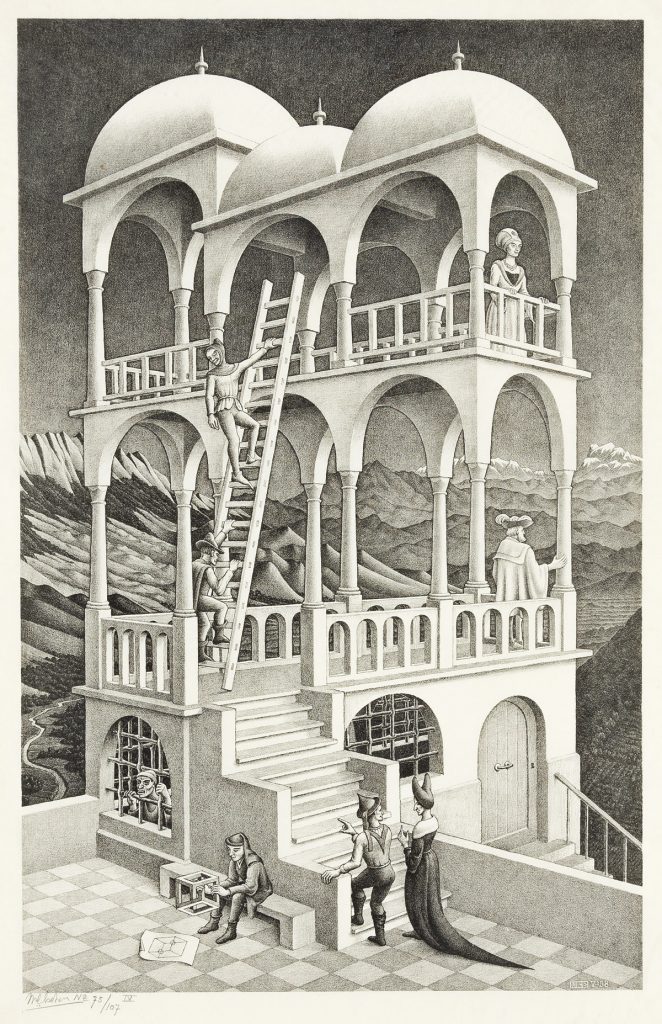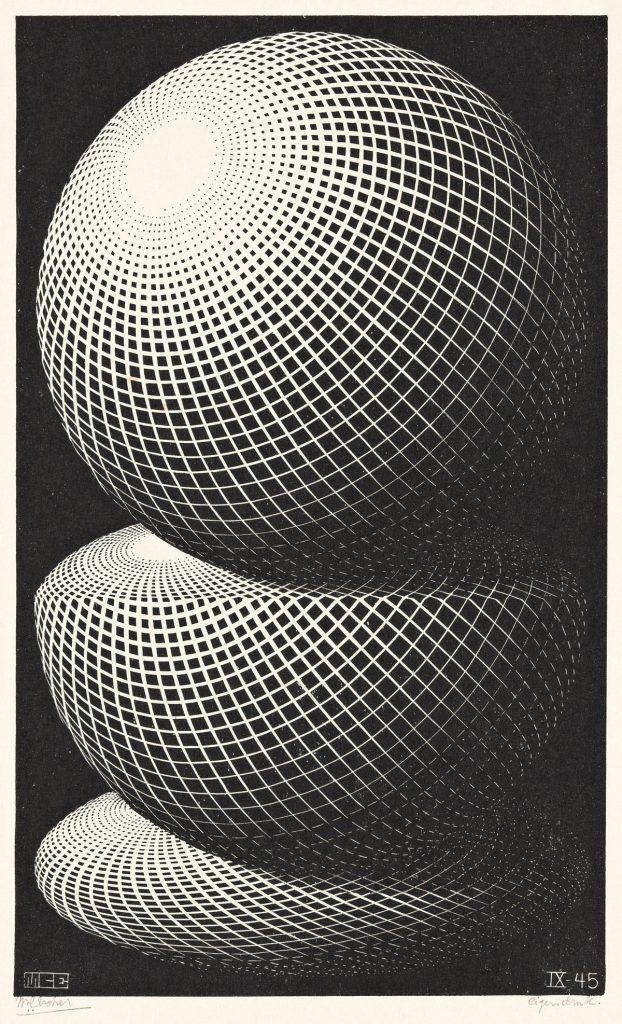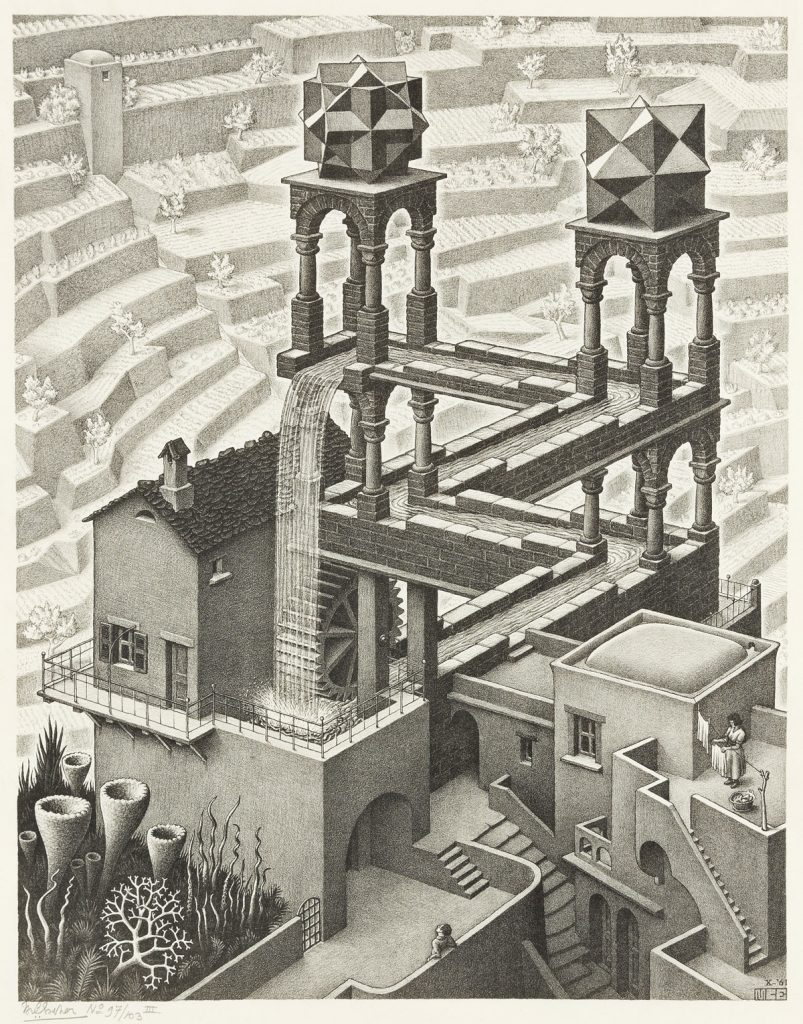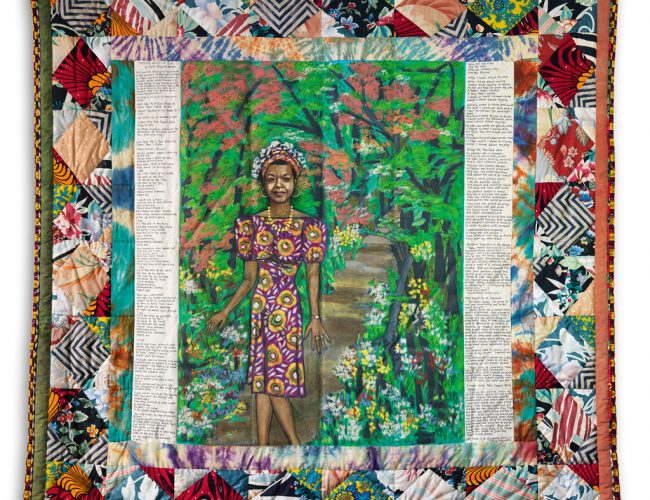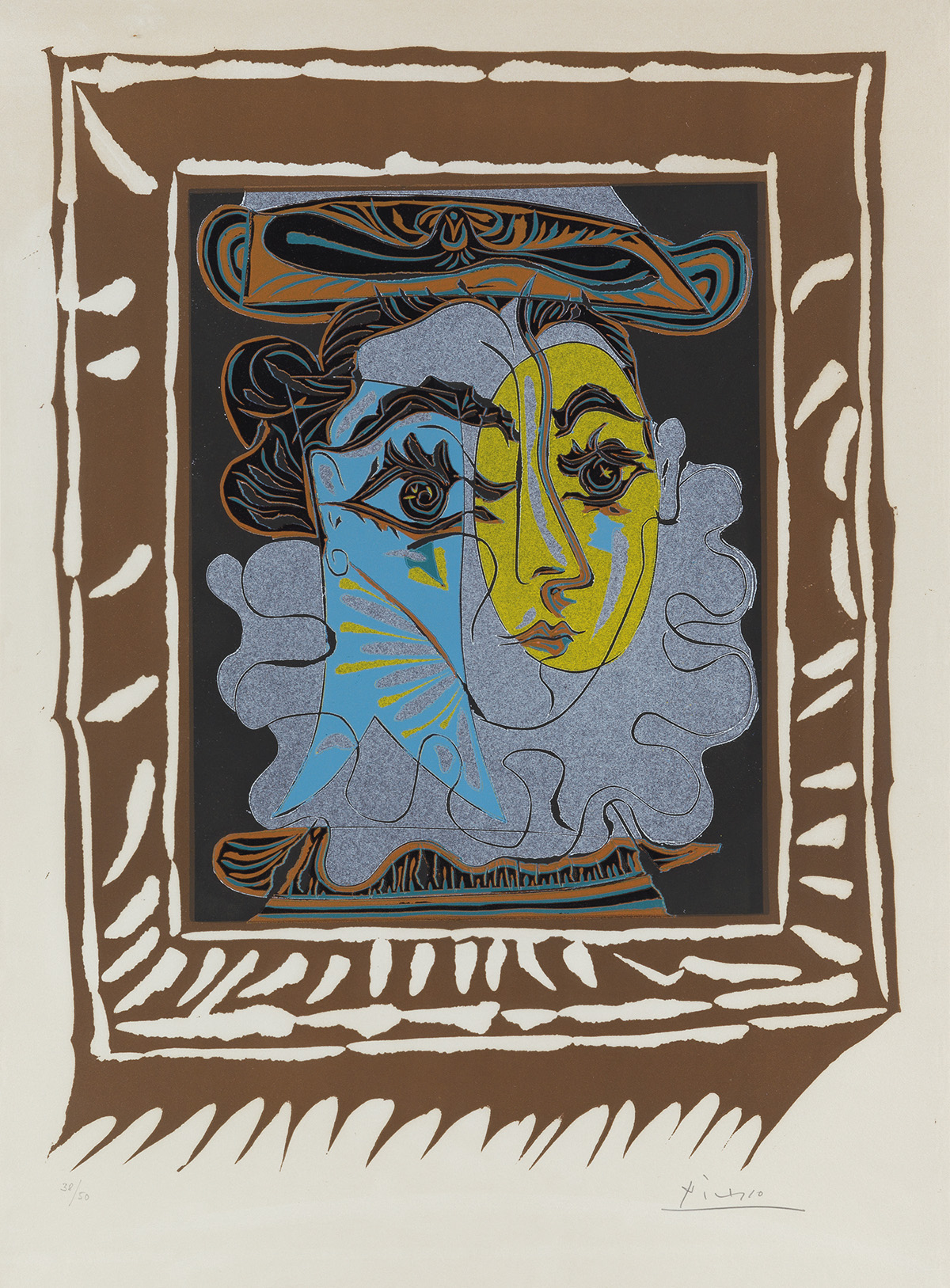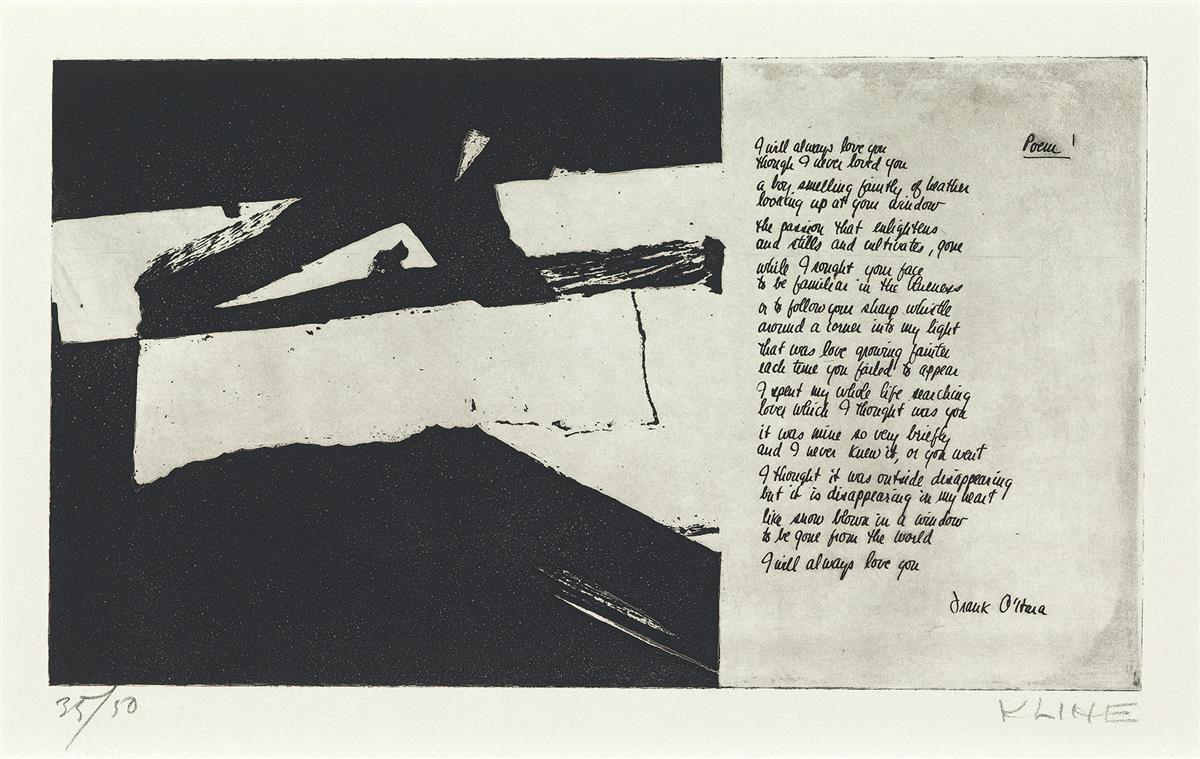Artist Profile: M.C. Escher
Swann prints and drawings director, Todd Weyman, provides an overview of op-artist M.C. Escher’s career
Maurits Cornelis Escher, more commonly known as just M.C. Escher (1898-1972), was born in Leeuwarden, Netherlands the fourth son of a civil engineer, a father who instilled in Escher his interest in mathematics. He attended the Haarlem School of Architecture and Design, initially studying architecture before switching to focus on the graphic arts. Escher was a sickly child, which persisted into his adult years, and remained mostly isolated, practicing his art and honing his craft. He began traveling in 1922 after finishing his education and visited Italy, Spain, and Portugal, ultimately remaining in Italy for eleven years and marrying Jetta Umiker, a Swiss woman and Italo-phile like himself.
Escher’s Time in Italy
During his time in Italy, Escher traveled widely around the country as well as to surrounding places—including Grenada, Spain—and used his drawings from these places as inspiration for his future prints. Among Escher’s main focuses was tessellations, or repeated geometric patterns. His inspiration for these designs originated from Alhambra palace in Granada, Spain. With the rise of Benito Mussolini and the fascist party in Italy, Escher and his family were forced to move, going to Switzerland in 1935 and two years later to Belgium, finally returning to the Netherlands in 1941 (as the German army had occupied Belgium).
Focus on Architecture
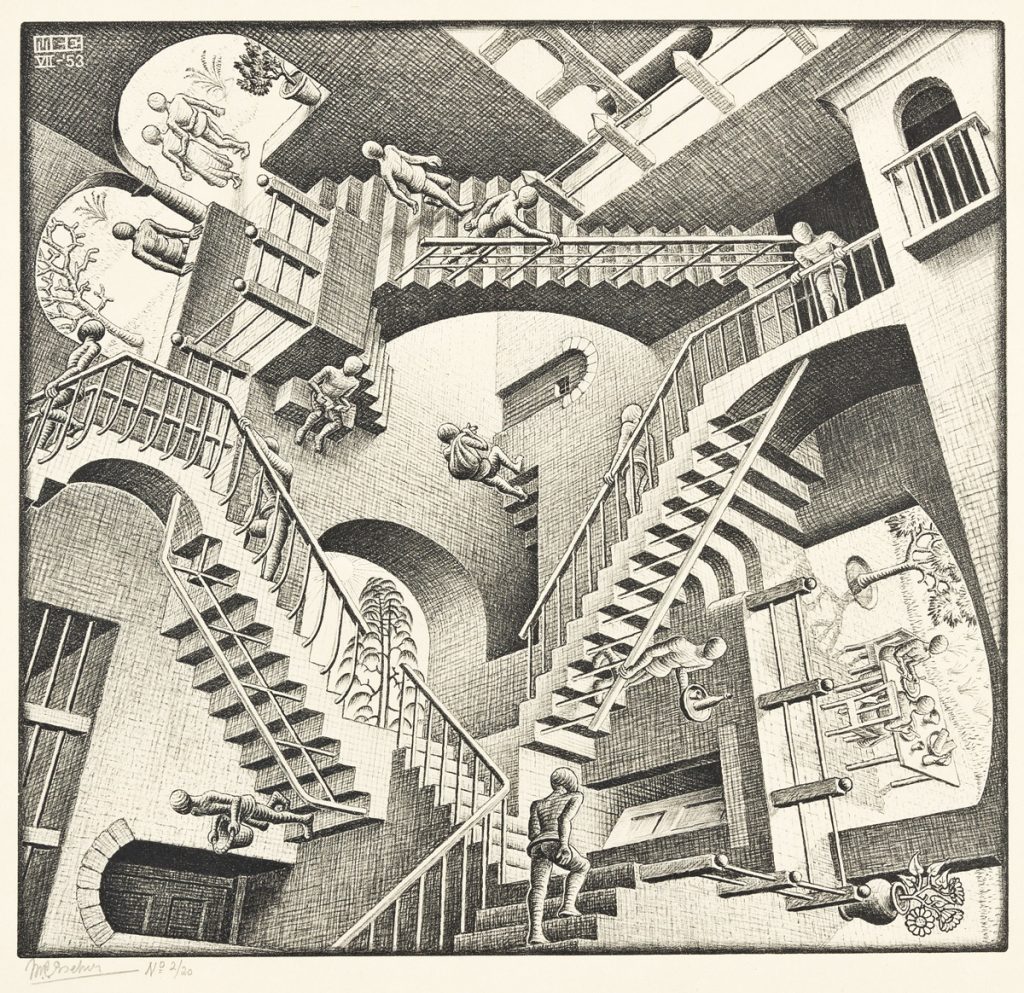
His early works were heavily focused on landscapes, particularly those of southern Italy, and gradually shifted toward architecture, geometry, and spatially impossible compositions from the 1940s onward, with his return to his native country and the apex of his career. Escher was a poor student, failing or dropping out of school from his elementary years through college, yet he became one of the most mathematically advanced artists of all time and among the most technically accomplished printmakers of the twentieth century. Escher was lefthanded, as were many other virtuoso artists like himself, including Leonardo da Vinci, Michelangelo, Raphael, Albrecht Dürer, Rembrandt and Paul Klee, and true to his individuality never became closely associated with any particular modern art movements. His art found a dedicated audience in the 1960s through the hippie culture and Escher rose to worldwide fame.
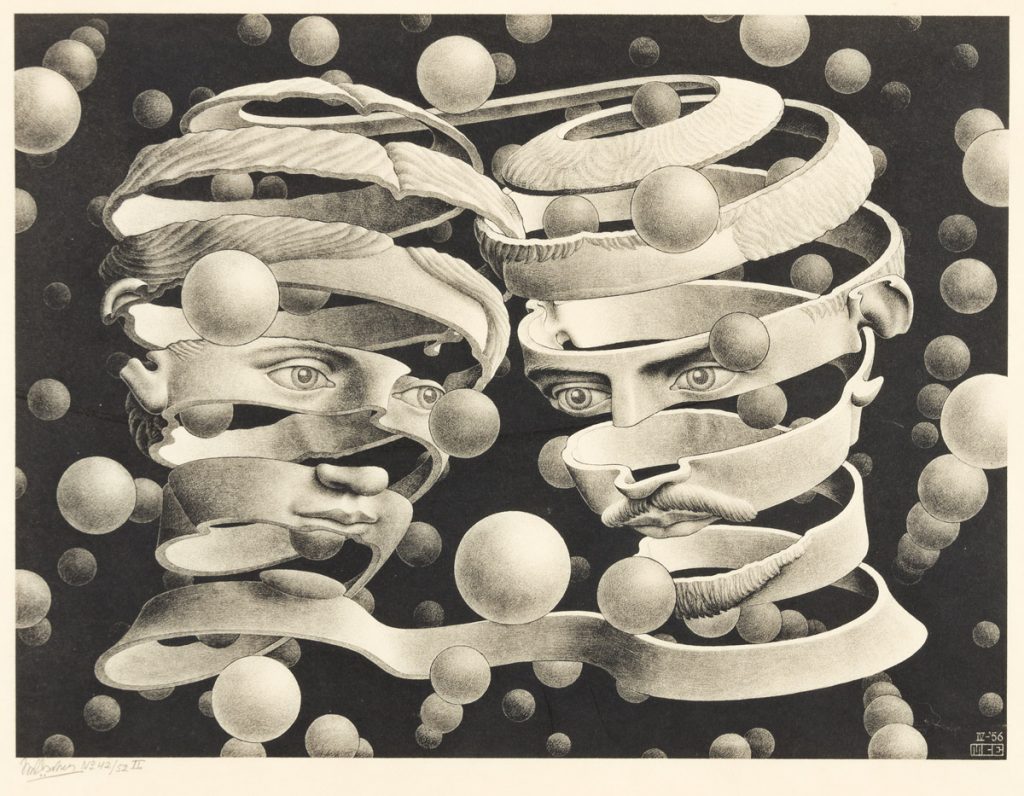
The extraordinary examples of Escher’s graphic work in this private collection, collected within a single family over the course of several decades and offered at auction for the first time, span his illustrious career, from early lithographs he made during his lengthy sojourn in Italy during the 1920 and 1930s to his mathematically-inspired, impossible compositions from the height of his career.
